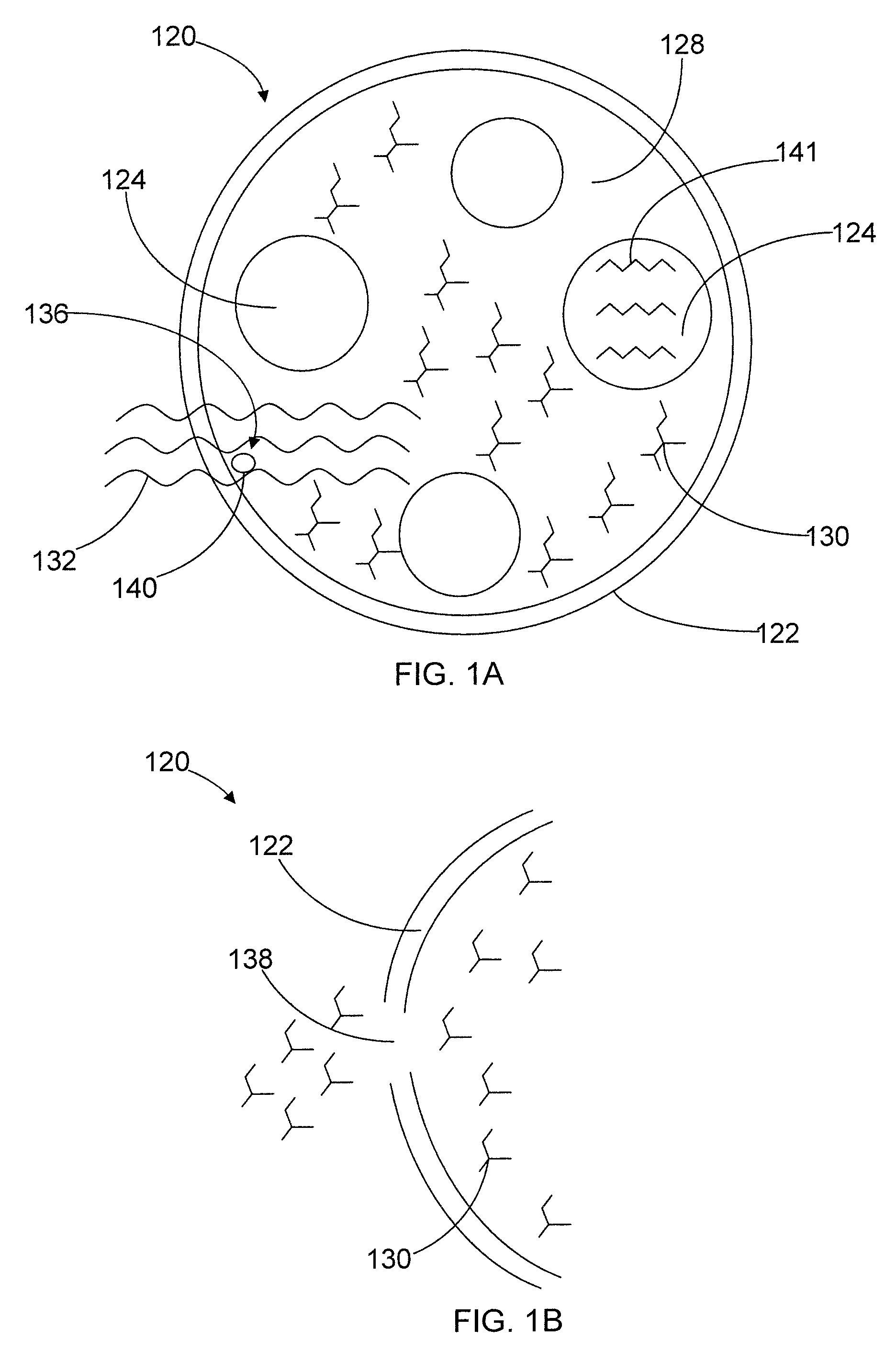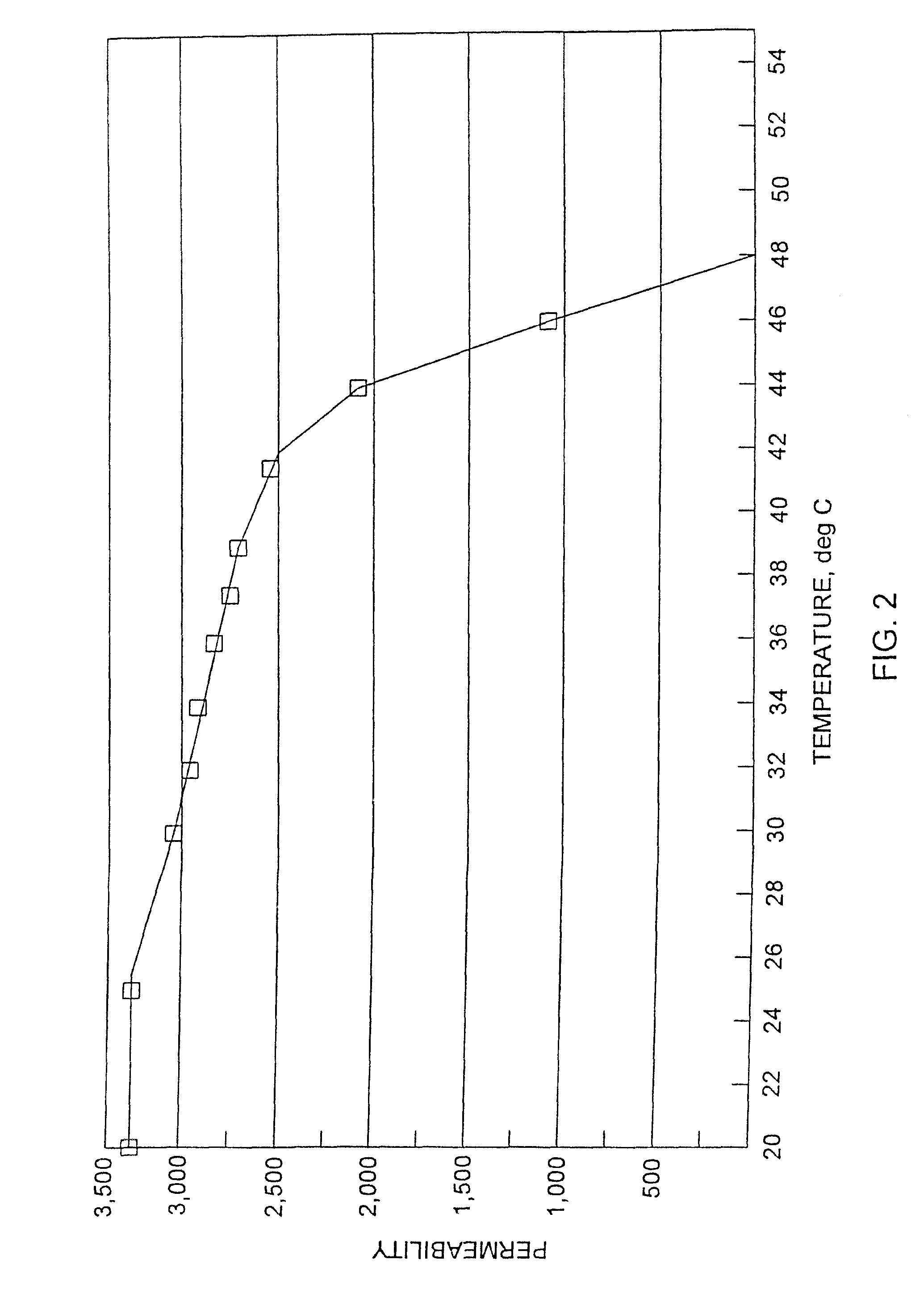Externally triggered microcapsules
a technology of external triggers and microcapsules, applied in the field of microcapsules, can solve the problems of insufficient precision of the method of creating hyperthermia in local tissues, the size of liposomes limits their utility, and the delivery of a variety of active drugs to a specific site in the body with a liposome formulation still presents difficulties, so as to enhance the formation of microcapsules, enhance the formation of micelles, and increase the shelf life and stability of parenteral
- Summary
- Abstract
- Description
- Claims
- Application Information
AI Technical Summary
Benefits of technology
Problems solved by technology
Method used
Image
Examples
example i
Microgravity Experiments Summary
[0104]The basic formulations and simplified liquid-liquid, dispersion methods were developed in 1988 and 1989. The basic concept is the formation of a multi-lamellar microcapsule with an aqueous drug / oil dispersion at its center, a hydrocarbon / oil drug#2 and / or radiocontrast medium (e.g. IPO) as a next layer, an aqueous layer / drug (e.g., cis-platinum) as a next layer, and a polymeric outer coating or skin. Microencapsulation-related experiments designed to overcome the limitations of the first methods were conducted on six space missions beginning in April 1989 with the Consort-I sounding rocket using the Materials Dispersion Apparatus (MDA) mini-lab developed by Instrumentation Technology Associates, Inc. The sounding rocket flights produced only 6.5 minutes of microgravity conditions, but this was adequate to form the unique microcapsules in a single step. Experiments on the Space Shuttle permitted 10 minute dispersion times followed by curing of th...
example ii
Gravity-Dependent Restrictions Recognized
[0106]Gravity-dependent restrictions in the basic liquid-liquid spontaneous microencapsulation process led to the design of several microgravity experiments to explore the utility of this process when density-driven phenomena were eliminated. In particular, density-driven, gravity-dependent restrictions of the liquid-liquid microencapsulation process were: early phase separation producing fragile microcapsules; interfacial dynamic flow causing coalescence of microcapsules. Failure of ground-based experiments to derive uniform microcapsules lead to a desire to attempt microcapsule formation in space.
[0107]The microgravity flight experiments led to the development of a new liquid-liquid microencapsulation process that involves use of surfactants and co-surfactants in the aqueous phase and co-surfactant alcohols in the organic phase, which also contained, in one embodiment, high molecular weight polymers that formed a tough outer “skin” on the f...
example iii
Sounding Rocket Experiments
[0108]Initial experiments on Consort-1 and -3 were used to determine the effective mixing and diffusion kinetics in the MDAs (see below for apparatus description). This showed that sufficient volume was mixed at the interface via diffusion to allow formation of microcapsules. These experiments also provided the diffusion constants for each of the components of the liquid phases.
[0109]The first successful microencapsulation of drugs in microgravity was conducted on the Consort-4 mission in November 1991. The microcapsules were recovered and analyzed by microscopic image analysis. Mono-dispersed fluorescent beads were included as internal size standards and fluorescent labels were used to determine the distribution of drug in the various fluid compartments. Additional experiments, conducted on Consort-5 in September 1992, confirmed the capabilities of the new method for forming multi-lamellar microcapsules with alternating layers of hydrophilic and hydrophob...
PUM
| Property | Measurement | Unit |
|---|---|---|
| diameter | aaaaa | aaaaa |
| diameter | aaaaa | aaaaa |
| diameter | aaaaa | aaaaa |
Abstract
Description
Claims
Application Information
 Login to View More
Login to View More - R&D
- Intellectual Property
- Life Sciences
- Materials
- Tech Scout
- Unparalleled Data Quality
- Higher Quality Content
- 60% Fewer Hallucinations
Browse by: Latest US Patents, China's latest patents, Technical Efficacy Thesaurus, Application Domain, Technology Topic, Popular Technical Reports.
© 2025 PatSnap. All rights reserved.Legal|Privacy policy|Modern Slavery Act Transparency Statement|Sitemap|About US| Contact US: help@patsnap.com


